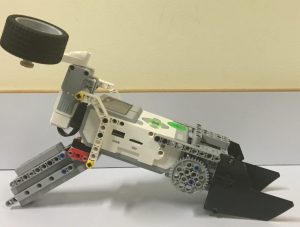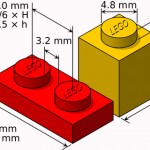
In the age of digital technology, there are so many things that are designed to make peoples’ lives easier. Smart phones allow us to stay connected wherever we are, robots wash our dishes and clean our floors, and digital voice assistants such as Alexa and Siri can schedule appointments and order groceries that will be delivered to your door.
“Assistive technology promotes greater independence by enabling people to perform tasks they were formerly unable to accomplish…” (https://en.wikipedia.org/wiki/Assistive_technology)
The Challenge
The challenge is to design and construct an assistive device for a person or animal with a disability using LEGO. It can be a prosthetic device or something that can help with a specific task.
Defining the Problem
Engineering is all about creating solutions to a problem or fulfilling a need, so it is important that you have a well-defined problem.
Think about the person/people involved (or even better, talk to them!) to identify their needs and then write a clear statement of the problem.
- Who has the problem or need?
- What is the problem?
- Why is it important to solve?
- What are the constraints?
- What functions are required?
Example Scenarios
Here are a few examples of possible problems and solutions…
Remote Door Alarm
Elderly people living at home need to be able to let visitors know they are home because they may not be able to get to the door in time before their visitor may leave.
Create a doorbell that signals the resident (e.g. by bluetooth from one EV3 brick to another) that someone is at the door, and provides feedback to the visitor that the resident is on their way.
Floor Cleaning
Some people struggle with cleaning, either because of limited mobility or time (or can’t be bothered).
Create a robot capable of sweeping small pieces of rubbish, LEGO, fluff, etc. from a floor without getting stuck in the corners. Alternatively, create a robot capable of wiping down a bench – without falling off!
Prosethetics
Prosthetic devices have advanced greatly in recent years, making them much more natural and comfortable to use than ever before, but still have room for improvement. Advanced prosthetics incorporate ways to use signals either from brain implants or nerve signals to control movements, and even dogs are getting help from prosthetic devices.
For an example of LEGO being used to solve an engineering problem, check out this video about David Aguilar, a bioengineering student, who built his own prosthetic limb out of LEGO.
Lots More Options
For more examples of assistive technologies see: https://www.nichd.nih.gov/health/topics/rehabtech/conditioninfo/device
CEEO
Latest posts by CEEO (see all)
- Chair for Mr Bear - 21 August 2020
- Assistive Technology: Making Lives Easier - 20 August 2020
- Sturdy Tower - 14 June 2020
- Going the Distance - 21 May 2020
- GPS accuracy testing with LEGO bricks - 10 September 2015


